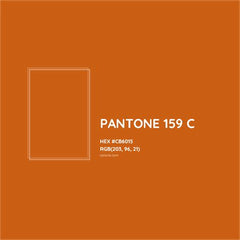Your cart is empty now.

The Nice Classification System for Trademarks: History and Contents
The Nice Classification System: History and Contents
The Nice Classification, formally known as the International Classification of Goods and Services for the Purposes of the Registration of Marks, is a system used to classify goods and services for trademark registration. Established by the Nice Agreement (1957), it provides a standardized framework for trademark offices worldwide, facilitating the registration and protection of trademarks across different jurisdictions. This article delves into the history, structure, and importance of the Nice Classification system, explaining its development, organization, and impact on global trademark registration.
History of the Nice Classification System
The history of the Nice Classification system dates back to the mid-20th century. Before its inception, countries had disparate systems for classifying goods and services, which created inconsistencies and complications in international trademark registration and enforcement. Recognizing the need for a unified system, representatives from several countries convened in Nice, France, in 1957, resulting in the establishment of the Nice Agreement.
Key Milestones
-
1957: Establishment of the Nice Agreement: The Nice Agreement was adopted during the diplomatic conference in Nice, France, on June 15, 1957. It came into effect on April 8, 1961. The initial version included 34 classes of goods and 8 classes of services, totaling 42 classes.
-
Subsequent Revisions and Editions: The Nice Classification undergoes periodic revisions to accommodate changes in the market and the emergence of new products and services. As of now, the system is in its 12th edition, which became effective on January 1, 2023.
-
WIPO Administration: The World Intellectual Property Organization (WIPO) administers the Nice Classification system, overseeing its updates and ensuring its relevance in the ever-evolving landscape of goods and services.
Structure and Contents of the Nice Classification System
The Nice Classification system is organized into 45 classes, each encompassing specific types of goods or services. It includes a comprehensive list of goods and services, providing a standardized language for trademark registration. The system is divided into two main categories: goods and services.
Classification of Goods
The classification of goods is covered under Classes 1 to 34. Here is an overview of some key classes:
-
Class 1: Chemicals
- Description: Chemicals used in industry, science, and agriculture, excluding those used in manufacturing or processing of foodstuffs, Industrial chemicals, adhesives for industrial purposes, fertilizers.
Class 2: Paints
- Description: Paints, colorants, and preparations for protecting against corrosion, varnishes, lacquers, wood preservatives.
Class 3: Cosmetics and Cleaning Preparations
- Description: Cleaning and beauty preparations, Soaps, perfumery, essential oils, cosmetics, hair lotions.
Class 4: Lubricants
- Description: Industrial oils, greases, and fuels.
Class 5: Pharmaceuticals
- Description: Pharmaceuticals and other preparations for medical and veterinary use, Medicines, dietary supplements, disinfectants.
Class 6: Metal Goods
- Description: Common metals and their alloys, metal building materials, transportable buildings.
Class 7: Machinery
- Examples: Machines and machine tools, motors and engines.
- Description: Machines and machine tools, engines (except for land vehicles).
Class 8: Hand Tools
- Description: Hand-operated tools and implements, cutlery.
Class 9: Electrical and Scientific Apparatus
- Description: Downloadable software and apps, apparatus and instruments for scientific research, navigation, surveying, and electrical apparatus.
Class 10: Medical Apparatus
- Description: Surgical, medical, dental, and veterinary apparatus, medical devices.
Class 11: Environmental Control Apparatus
- Description: Apparatus for lighting, heating, steam generating, cooking, refrigerating, drying, ventilating.
Class 12: Vehicles
- Description: Vehicles and apparatus for locomotion by land, air, or water, Automobiles, bicycles, boats.
Class 13: Firearms
- Description: Firearms and ammunition, explosives.
Class 14: Jewelry
- Description: Precious metals, their alloys, and goods in precious metals or coated therewith, jewelry, and timepieces.
Class 15: Musical Instruments
- Description: Musical instruments, Pianos, guitars, drums.
Class 16: Paper Goods and Printed Matter
- Description: Paper, cardboard, and goods made from these materials, printed matter, and bookbinding material.
Class 17: Rubber Goods
- Description: Rubber, gutta-percha, gum, asbestos, mica, and goods made from these materials.
Class 18: Leather Goods
- Description: Leather and imitations of leather, and goods made of these materials, animal skins, hides, trunks, and traveling bags.
Class 19: Non-Metallic Building Materials
- Description: Materials, not of metal, for building and construction.
Class 20: Furniture and Articles Not Otherwise Classified
- Description: Furniture, mirrors, picture frames, and articles made from these materials.
Class 21: Housewares and Glass
- Description: Household utensils, kitchen utensils, and containers, combs, and sponges.
Class 22: Cordage and Fibers
- Description: Ropes, string, nets, tents, awnings, tarpaulins, sails, sacks, and bags.
Class 23: Yarns and Threads
- Description: Yarns and threads for textile use.
Class 24: Fabrics
- Description: Textiles and textile goods, not included in other classes, bed and table covers.
Class 25: Clothing
- Description: Clothing, footwear, headgear.
Class 26: Fancy Goods
- Description: Lace and embroidery, ribbons and braid, buttons, hooks and eyes, pins, and needles.
Class 27: Floor Coverings
- Description: Carpets, rugs, mats, and matting, linoleum, and other materials for covering existing floors.
Class 28: Toys and Sporting Goods.
- Description: Games, toys, gym and exercise equipment, and sporting articles.
Class 29: Meats and Processed Foods
- Description: Meat, fish, poultry, and game; meat extracts; preserved, frozen, dried, and cooked fruits and vegetables.
Class 30: Staple Foods
- Description: Coffee, tea, cocoa, sugar, rice, tapioca, sago, artificial coffee; flour and preparations made from cereals, bread, pastry and confectionery.
Class 31: Natural Agricultural Products
- Description: Raw and unprocessed agricultural, aquacultural, horticultural, and forestry products.
Class 32: Light Beverages
- Description: Beers, mineral and aerated waters, and other non-alcoholic beverages.
Class 33: Wines and Spirits
- Description: Alcoholic beverages, except beers.
Class 34: Smokers’ Articles
- Description: Tobacco and tobacco substitutes, cigarettes and cigars, smoking articles, matches.
Classification of Services
The classification of services is covered under Classes 35 to 45. Here is an overview of some key classes:
-
Class 35: Advertising and Business
- Description: Advertising; business management; business administration; business consulting; office functions.
Class 36: Insurance and Financial
- Description: Insurance; financial affairs; banks, wealth management, monetary affairs; real estate affairs.
Class 37: Building Construction and Repair
- Description: Building construction; repair; installation services, handyman services.
Class 38: Telecommunications
- Description: Telecommunications.
Class 39: Transportation and Storage
- Description: Transport; packaging and storage of goods; travel arrangement.
Class 40: Treatment of Materials
- Description: Treatment of materials.
Class 41: Education and Entertainment
- Description: Education; providing of training; podcasts; blogs; entertainment; music; video and social media content, gyms and exercise, sporting and cultural activities; musical bands.
Class 42: Computer and Scientific
- Description: Cloud and non-downloadable software; web apps; scientific and technological services and research and design relating thereto; industrial analysis and research services; design and development of computer hardware and software, programming services; artificial intelligence.
Class 43: Food, Drink, and Temporary Accommodation
- Description: Services for providing food and drink; restaurants, bars, temporary accommodation.
Class 44: Medical, Beauty, and Agricultural
- Description: Medical services; veterinary services; hygienic and beauty care for human beings or animals; agriculture, horticulture, and forestry services.
Class 45: Personal and Legal
- Description: Legal services; security services for the protection of property and individuals; personal and social services rendered by others to meet the needs of individuals.
Each class within the Nice Classification system includes an explanatory note that provides additional details about the scope of the class, along with a list of specific goods or services included in that class. This detailed classification ensures clarity and precision in trademark registration, reducing ambiguity and potential conflicts.
Importance of the Nice Classification System
The Nice Classification system offers several key benefits, making it an essential tool in the realm of trademark registration and protection.
1. Standardization and Consistency
By providing a standardized framework for classifying goods and services, the Nice Classification system ensures consistency across different jurisdictions. This standardization simplifies the trademark application process for businesses operating internationally, as they can use the same classification system in multiple countries.
2. Facilitation of Trademark Searches
The structured classification of goods and services aids in conducting trademark searches. Applicants and trademark offices can easily identify existing trademarks within specific classes, helping to avoid conflicts and ensuring that new trademarks are unique and distinct.
3. Streamlined Registration Process
The Nice Classification system streamlines the trademark registration process by providing clear guidelines for classifying goods and services. This reduces the administrative burden on trademark offices and applicants, leading to more efficient and effective registration procedures.
4. Adaptability to Market Changes
The periodic revisions of the Nice Classification system ensure that it remains relevant and adaptable to changes in the market. As new products and services emerge, the system evolves to accommodate them, maintaining its utility and accuracy in the face of innovation and technological advancement.
5. International Recognition
The widespread adoption of the Nice Classification system by numerous countries underscores its importance in global trademark law. It facilitates international trade and commerce by providing a common language for trademark registration, fostering cooperation and mutual recognition among different jurisdictions.
Challenges and Criticisms
While the Nice Classification system offers numerous advantages, it is not without its challenges and criticisms. Some of the common issues include:
1. Complexity and Ambiguity
Despite its detailed structure, the Nice Classification system can sometimes be complex and ambiguous, leading to difficulties in determining the appropriate class for certain goods or services. This can result in inconsistent classifications and potential disputes.
2. Periodic Revisions
While periodic revisions are necessary to keep the system up-to-date, they can also create challenges for trademark applicants and offices. Staying abreast of changes and ensuring compliance with the latest edition requires ongoing effort and resources.
3. Interpretation Variations
Different countries may interpret and apply the Nice Classification system differently, leading to variations in classification practices. This can complicate the trademark registration process for businesses operating in multiple jurisdictions.
Conclusion
The Nice Classification system plays a pivotal role in the global trademark registration landscape. By providing a standardized and structured framework for classifying goods and services, it enhances the efficiency and effectiveness of trademark protection, facilitating international trade and commerce. Despite its challenges, the system's benefits far outweigh its drawbacks, making it an indispensable tool for businesses, trademark attorneys, and intellectual property offices worldwide. As the market continues to evolve, the Nice Classification system will undoubtedly adapt to meet new demands, ensuring its continued relevance and utility in the ever-changing world of goods and services.



